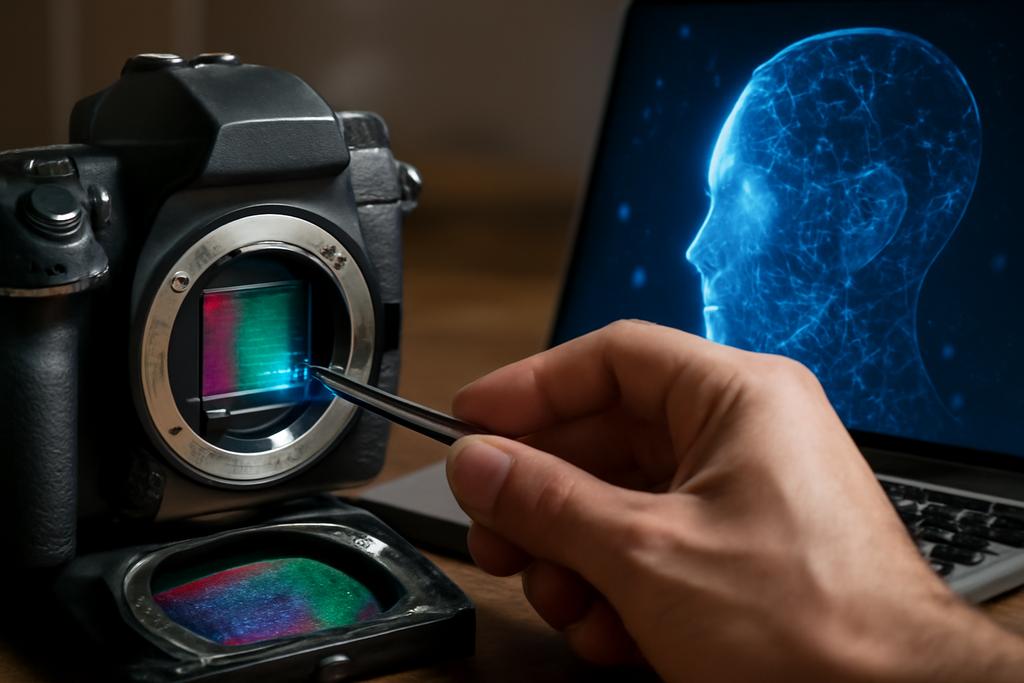Imagine a world where the limitations of cheap, low-resolution sensors are a thing of the past. That future might be closer than we think, thanks to a groundbreaking approach developed by researchers at Rutgers University. Led by Morriel Kasher, Michael Tinston, and Predrag Spasojevic, their work focuses on a clever technique to drastically improve the accuracy of low-resolution analog-to-digital converters (ADCs) using nothing more than a digital lookup table (LUT).
The Problem With Cheap Sensors
ADCs are the unsung heroes of the digital world. They transform continuous analog signals—think the sound from a microphone, the light from a camera—into discrete digital values that computers can understand. But ADCs, especially low-resolution, inexpensive ones, introduce significant errors during this transformation. This error manifests as noise and distortion, blurring the quality of the signal—like adding static to a radio broadcast or grain to a photograph. In some applications, such as spectrum analysis, this distortion can effectively mask the very signal you’re trying to measure.
The traditional way to mitigate this problem has been to use higher-resolution, more expensive ADCs. But this approach isn’t always feasible, especially in situations that need a large number of sensors or those with power constraints, such as many portable or mobile devices.
A Digital Fix
Kasher, Tinston, and Spasojevic’s innovation offers an elegant alternative: a post-processing technique that essentially cleans up the signal after it’s been digitized, using the power of digital processing to compensate for the imperfections of analog hardware. This is done by creating a highly specialized digital lookup table that examines a sequence of recent sensor readings, estimates the intended value, and then corrects the noisy digital output. Think of it as a digital filter, but one with a far deeper understanding of the underlying analog imperfections.
The Smarts Behind the Table
The LUT isn’t just any table; it’s a finely tuned instrument built using sophisticated mathematical models. Rather than relying on brute-force training with huge datasets (a common technique in machine learning), the Rutgers team devised a four-stage design process, tackling each analytical stage independently. This model-driven approach makes the LUT design process reliable, transparent, and avoids the pitfalls of traditional data-driven methods. The research team used a sinusoidal signal as a test signal, due to the ease of analyzing it in frequency-domain.
Crucially, they also incorporated a clever technique called “dithering.” In essence, they introduce a controlled amount of noise to the signal before digitization to improve the spectral purity of the signal. This counter-intuitive step effectively decorrelates the errors introduced by quantization, leading to a surprisingly cleaner output signal.
Shrinking the Table: A Memory Miracle
One of the most impressive aspects of their work lies in drastically reducing the memory footprint of the LUT. Traditional LUT designs require a vast amount of memory, which can be impractical for resource-constrained systems. The Rutgers researchers have developed innovative indexing schemes and a high-probability indexing technique that decrease the required memory by orders of magnitude. Think of it as compressing a massive encyclopedia into a concise pocket guide, without losing essential information.
The Impact
The results are astonishing. For a simulated 3-bit quantized sinusoidal signal, the LUT boosted the signal-to-noise ratio by over 19 dBc—a significant improvement in clarity and fidelity. This was achieved while keeping the LUT remarkably compact, requiring only 324 bytes of memory. This makes their method suitable for a wide array of low-cost, resource-constrained devices like mobile sensors and wideband digital receivers.
Looking Ahead
The implications of this research extend far beyond a single application. By offering a low-cost, low-power method for improving sensor accuracy, the Rutgers researchers pave the way for cheaper, more widespread adoption of high-quality sensing in various fields—from environmental monitoring and medical diagnostics to industrial automation and scientific research. This work might open exciting possibilities in enhancing the capabilities of numerous IoT devices that rely on affordable sensors with currently limited performance.
The research team is already looking at how to extend this approach to signals beyond sinusoidal waves and explore more efficient ways of managing noise in the system. This research holds immense promise for improving data acquisition in numerous applications, by creating a way to fix the inherent limitations of analog hardware using the power of digital processing.










